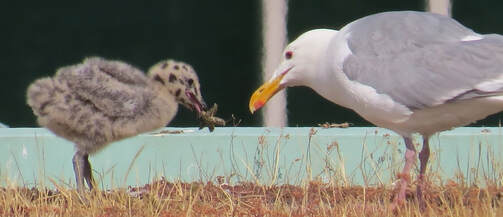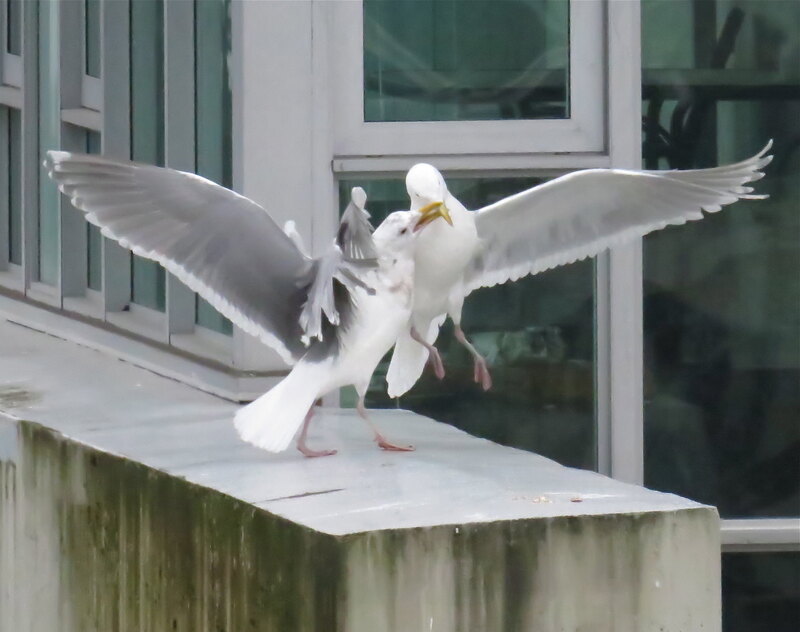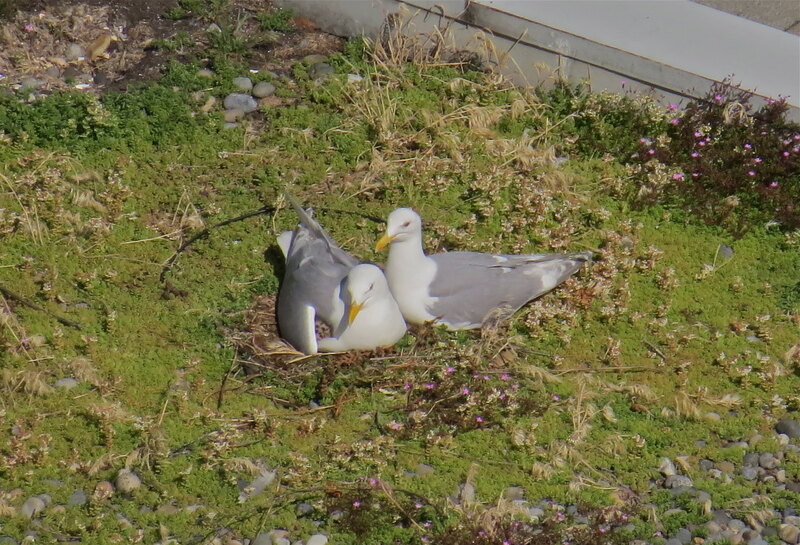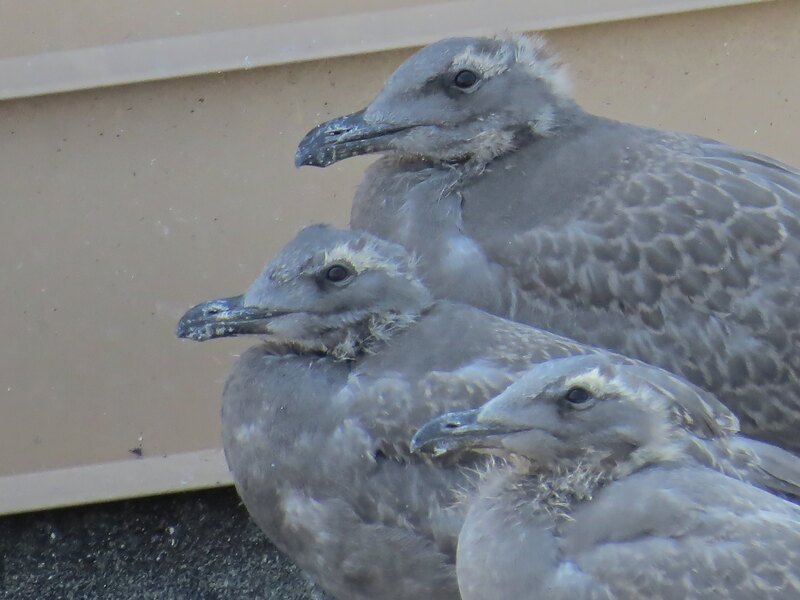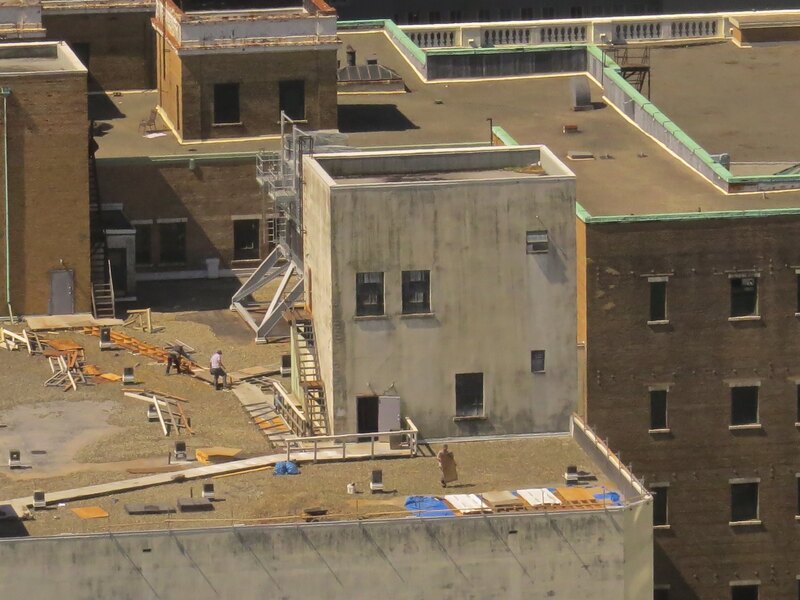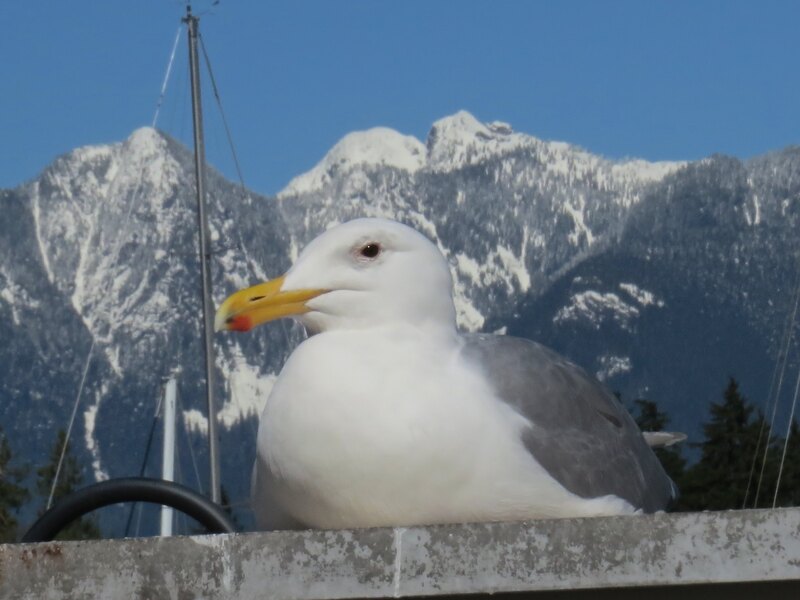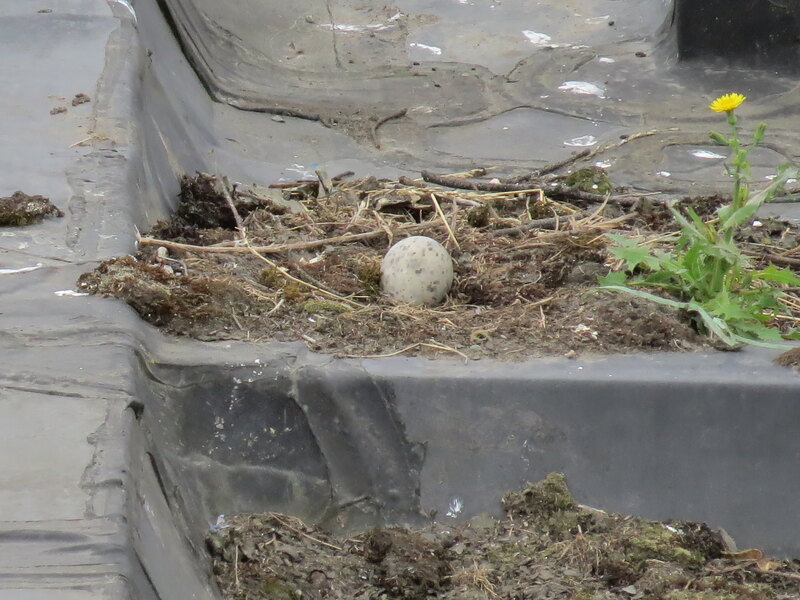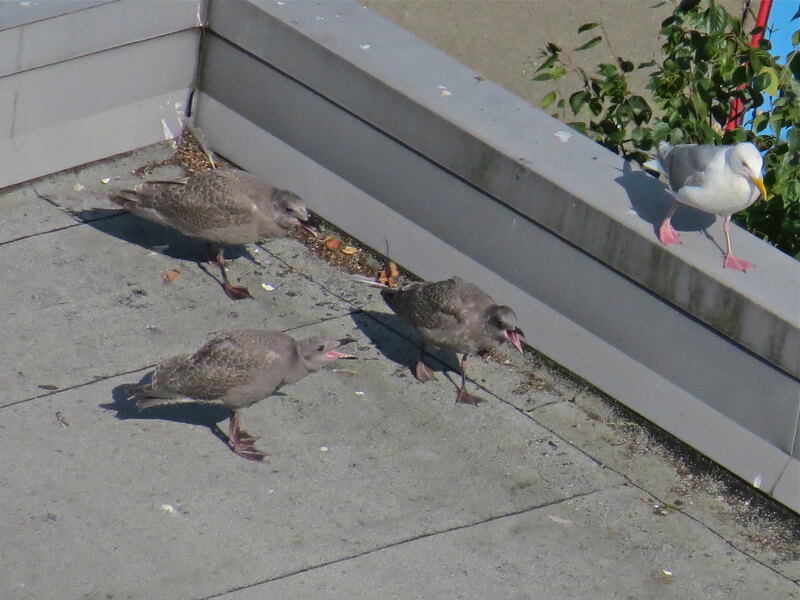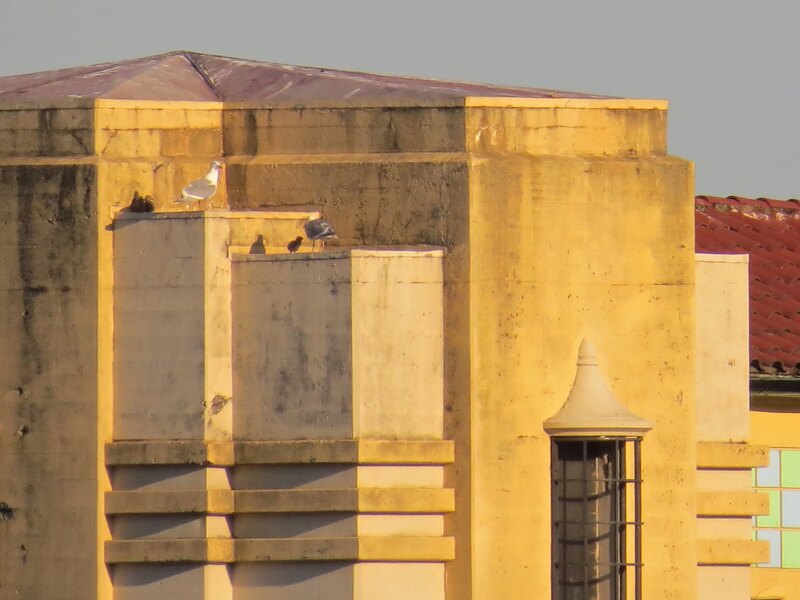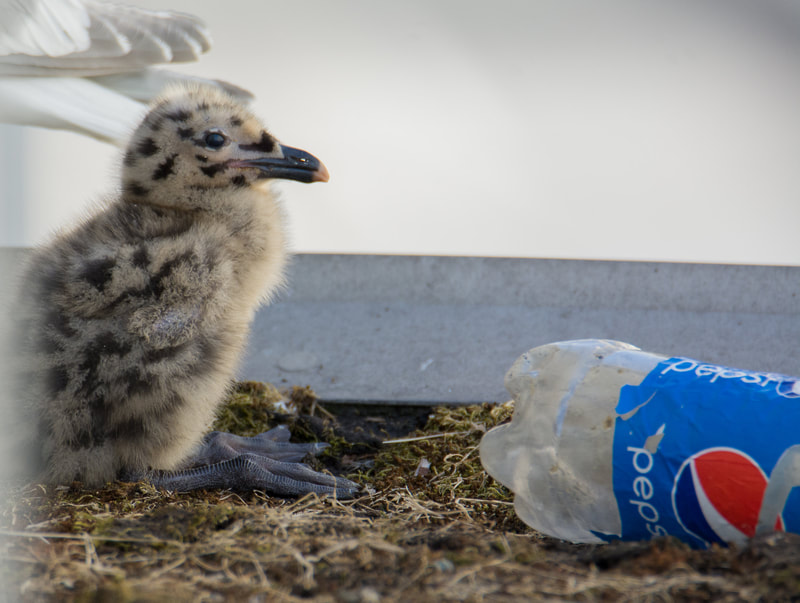Welcome to the homepage of the
Salish Sea Urban Gull Monitoring Program
What we do:
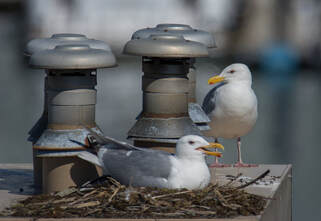
We are a team of ecologists, statisticians, and seabird lovers studying the lives of urban gulls and other seabirds of the Salish Sea. Our star subject is the Glaucous-winged Gull (Larus glaucescens). This large and intelligent gull makes its home in every corner of the Salish Sea, on land, on water, and in our cities. Residents of the region long before humans arrived, they have adapted remarkably well to our ever-growing presence and are now our urban neighbours, often making their homes and raising their young using the same structures that we do. We strive to better understand how they use our cities: where they nest, what they eat, and how they interact with humans and with each other.
Though their numbers have declined substantially and though many of their classical wilderness colonies have disappeared in the Salish Sea over the past 40 years (Blight 2011, Blight et al. 2015), there is considerable evidence that urban colonies (including isolated rooftop-nesting pairs) have remained successful or even grown in size (Kroc et al. TBD, de Faria et al. 2022, Blight et al. 2019). Urban-nesters appear to enjoy greater reproductive success than their wilderness-nesting counterparts (Kroc 2018a), and some seem to be so comfortable in our cities that they maintain residency year-round (Kroc 2018b). Yet, most of their urban lifestyle and interactions remain a mystery.
We aim to decode more of their urban ecology by monitoring their population status, reproductive success, habitat use, feeding strategies, and interactions with humans in cities across the Salish Sea. Regular monitoring occurs in the cities of Victoria, Vancouver, Richmond, and Nanaimo in British Columbia, and in the cities of Seattle, Tacoma, and Bellingham in Washington state. We are always expanding the scope of our monitoring program and welcome contributions from the general public (see "Volunteer opportunities" below).
Though their numbers have declined substantially and though many of their classical wilderness colonies have disappeared in the Salish Sea over the past 40 years (Blight 2011, Blight et al. 2015), there is considerable evidence that urban colonies (including isolated rooftop-nesting pairs) have remained successful or even grown in size (Kroc et al. TBD, de Faria et al. 2022, Blight et al. 2019). Urban-nesters appear to enjoy greater reproductive success than their wilderness-nesting counterparts (Kroc 2018a), and some seem to be so comfortable in our cities that they maintain residency year-round (Kroc 2018b). Yet, most of their urban lifestyle and interactions remain a mystery.
We aim to decode more of their urban ecology by monitoring their population status, reproductive success, habitat use, feeding strategies, and interactions with humans in cities across the Salish Sea. Regular monitoring occurs in the cities of Victoria, Vancouver, Richmond, and Nanaimo in British Columbia, and in the cities of Seattle, Tacoma, and Bellingham in Washington state. We are always expanding the scope of our monitoring program and welcome contributions from the general public (see "Volunteer opportunities" below).
Who we are:
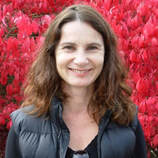
Dr. Louise Blight is a wildlife ecologist specializing in seabird ecology. She is the senior scientist and principal of Procellaria Research & Consulting, an Adjunct Associate Professor at the University of Victoria's School of Environmental Studies, and a founder of the Salish Sea Urban Gull Monitoring Program. Contact Louise about gull-related items at louise[dot]blight[at]gmail[dot]com.
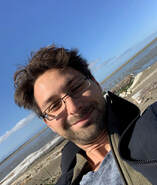
Dr. Ed Kroc is a statistician with applied interests in wildlife ecology. He is an Assistant Professor of Measurement, Evaluation, and Research Methodology at the University of British Columbia and a founder of the Salish Sea Urban Gull Monitoring Program. Contact Ed about gull-related items at ed[dot]kroc[at]ubc[dot]ca.
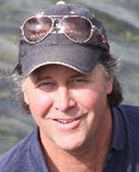
Dr. Doug Bertram is an ecologist specializing in marine birds and ecosystems. He is a research scientist for Environment and Climate Change Canada at the Institute of Ocean Sciences and a founder of the Salish Sea Urban Gull Monitoring Program.
Volunteer opportunities for citizen-science:
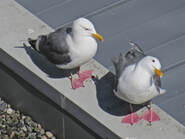
Can you see a gull nest outside your apartment window? Do you hear the peeps of baby gulls each summer atop your roof? Do you enjoy gull-watching in the city? If so, we want to hear from you! We monitor thousands of rooftops across the cities of the Salish Sea using aerial drones, cameras, binoculars, and the ordinary eye. But we also miss far more than we see. You can help us fill in the gaps by reporting where you see nesting gulls or year-round residents. We also work with volunteers to do some of our regular monitoring at important sites. Contact Ed Kroc (ed[dot]kroc[at]ubc[dot]ca) with sightings or for more information.
Publications:
* An urban gull: How spatial and structural features of a coastal city predict nest site selection in the urban-nesting Glaucous-winged Gull (Larus
glaucescens). Kroc, E., Blight, L.K., Cao, W. (Soon to come!)
* Urban gulls living with humans (2022). de Faria, J.P., Lopes, C.S., Kroc, E., Blight, L.K., Nager, R.G. In Seabird Biodiversity and Human Activities, Ramos, J.A. &
Periera, L. (eds.): 90-105. Boca Raton: CRC Press.
* Evaluating UAV-based techniques to census an urban-nesting gull population on Canada's Pacific coast (2019). Blight, L.K., Bertram, D.F.,
Kroc, E. Journal of Unmanned Vehicle Systems, 7(4): 312-324.
* An example of year-round nest fidelity among urban-resident Glaucous-winged Gulls (Larus glaucescens) in Vancouver, BC, Canada (2018).
Kroc, E. British Columbia Birds, 28: 28-31.
* Reproductive ecology of urban-nesting Glaucous-winged Gulls (Larus glaucescens) in Vancouver, BC, Canada (2018). Kroc, E. Marine Ornithology, 46(2):
155-164.
* A century of change in Glaucous-winged Gull (Larus glaucescens) populations in a dynamic coastal environment (2015). Blight, L.K., Drever, M.C.,
Arcese, P. Condor, 117(1): 108-120.
* Egg production in a coastal seabird, the Glaucous-winged Gull (Larus glaucescens), declines during the last century (2011). Blight, L.K. PLoS ONE, 6:
e22027.
glaucescens). Kroc, E., Blight, L.K., Cao, W. (Soon to come!)
* Urban gulls living with humans (2022). de Faria, J.P., Lopes, C.S., Kroc, E., Blight, L.K., Nager, R.G. In Seabird Biodiversity and Human Activities, Ramos, J.A. &
Periera, L. (eds.): 90-105. Boca Raton: CRC Press.
* Evaluating UAV-based techniques to census an urban-nesting gull population on Canada's Pacific coast (2019). Blight, L.K., Bertram, D.F.,
Kroc, E. Journal of Unmanned Vehicle Systems, 7(4): 312-324.
* An example of year-round nest fidelity among urban-resident Glaucous-winged Gulls (Larus glaucescens) in Vancouver, BC, Canada (2018).
Kroc, E. British Columbia Birds, 28: 28-31.
* Reproductive ecology of urban-nesting Glaucous-winged Gulls (Larus glaucescens) in Vancouver, BC, Canada (2018). Kroc, E. Marine Ornithology, 46(2):
155-164.
* A century of change in Glaucous-winged Gull (Larus glaucescens) populations in a dynamic coastal environment (2015). Blight, L.K., Drever, M.C.,
Arcese, P. Condor, 117(1): 108-120.
* Egg production in a coastal seabird, the Glaucous-winged Gull (Larus glaucescens), declines during the last century (2011). Blight, L.K. PLoS ONE, 6:
e22027.
Some urban gulls of the Salish Sea:
We are expanding!
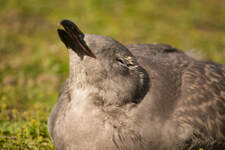
We are ever expanding our monitoring efforts in the Salish Sea (and beyond)! We are particularly interested to hear about any urban-nesting activity in any urban or semi-urban location around the Salish Sea. We have also begun to expand monitoring efforts further up and down the Pacific coast of North America, from Anchorage to San Diego, tracking urban-nesting Herring, Common, Western, and Heermann's Gulls. If you're interested in helping establish more consistent monitoring efforts in any city along the Pacific coast of North America where urban gulls nest, contact Ed Kroc (ed[dot]kroc[at]ubc[dot]ca) to chat.
All gull photos on this page by Ed Kroc.

